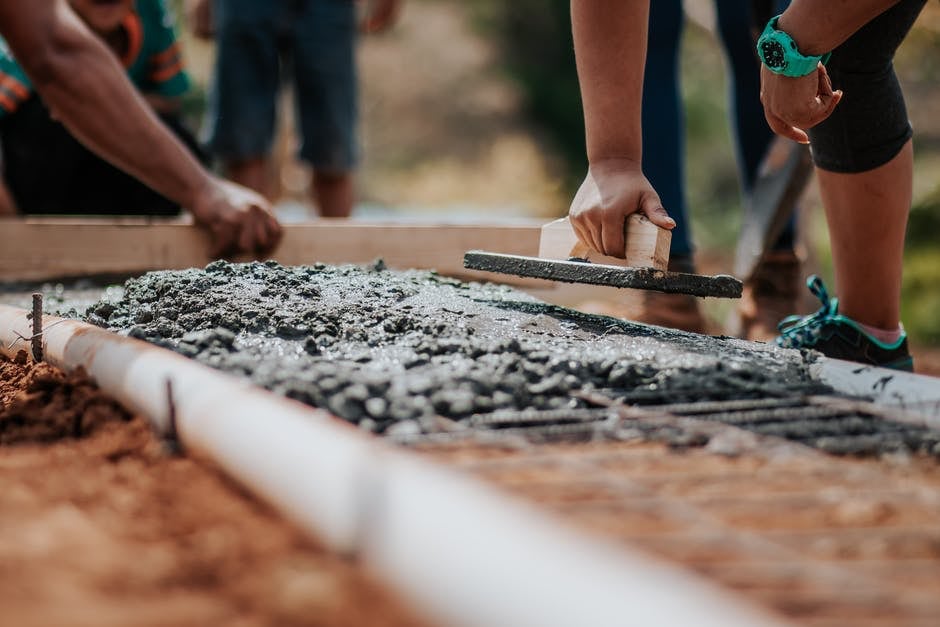
When getting ready to build a new home, the first major decision you’ll need to make is the foundation. The type of lot, climate, and local building codes will be some of the factors most likely to determine what type you can build. Inevitably it will come down to a choice between a slab, crawl space, or basement foundation.
Building the wrong kind of foundation for your property can have disastrous consequences. So you must understand the differences between each type of foundation and which type is most appropriate.
If you’re wondering, “how much does it cost to build a basement foundation,” don’t worry. We’ll answer that too!
Types of Foundations
The type of foundation you select will depend heavily on the natural conditions where you live. You’ll need to take into account the depth of the water tables, the slope line, and the type of soil on your lot.
Let’s take a look in detail at each type of slab so you can get an idea of what might work best for your new build.
Slab Foundation
A slab foundation is just what it sounds like: a giant slab of concrete. The house gets built directly on top of the concrete slab. Typically the slab is between six and eight inches thick.
A slab foundation also has shallow, steel-reinforced, concrete footings underneath it to keep it in place. In some cases, a contractor will also include rebar for added structure and support.
Underneath the footings is a layer of gravel that helps to facilitate drainage.
Expansion joists are another option to include around the surface of the slab. These joists can help to prevent the possibility of cracking during the drying process.
All of your utilities and piping will run up from underneath the slab and through it.
A slab foundation is best suited to a property that is relatively flat and does not require much excavation. They are also best laid over clay soil or soil that has a high clay content.
Slab foundations are much better suited to warmer climates than colder ones. In cold climates, there is a high risk of slab foundations cracking due to the freezing winter temperatures.
In warmer southern states, it is very rare for the ground to freeze. If the ground does freeze, it rarely freezes more than an inch or two. In that case, a slab foundation is sufficient.
Crawl Space
Crawl space foundations raise the home off the ground by about two feet. They are constructed using stem walls that extend from footings placed around the perimeter of the foundation. These support the home structure.
In some cases, a contractor might need to use an alternative to the stem wall. In this case, the crawl space foundation is supported by a system of piers. The piers are made out of rebar inserted in holes filled with concrete.
Once the concrete dries, the rebar gets tied to support beams that form a type of stem wall around the foundation.
Crawl space foundations are common in areas with excess water. Lifting the home off the ground prevents it from becoming damaged by moisture.
Crawl spaces are also very convenient for getting access to all of your home’s piping and utilities when they require hookups and repairs.
Whereas a slab foundation on a sloped lot would require extensive excavation, a crawl space foundation is ideal for a property with a significant slope. There isn’t a need to make the ground level when building a crawl space.
A crawl space foundation is also ideal for cold climates where the ground freezes and the frost level can reach 34 inches below the grade. Its footings reach well below the 34-inch mark to support and stabilize the foundation.
Basement
A basement foundation is one of the most popular foundations when the property, codes, and budget allows. Basements offer added storage space. They can also get converted into finished living spaces.
A finished basement is a great opportunity to add a rec room, extra bedrooms, and an additional bathroom. You can also add windows and doors to make it a walk-out basement and add functionality and light that way.
As far as protecting your foundation, a basement foundation offers features of both the slab and crawl space foundations. The floor of the basement is typically a concrete slab.
The support walls are similar to the support system of a crawl space. You will likely have the decision between poured concrete walls or block walls. To find out what’s allowed you’ll need to consult your local building codes.
You should avoid digging a basement foundation if you live in an area with high water tables and unsettled soil. They are prone to cause cracking and flooding of basement foundations.
How Much Does a Basement Foundation Cost?
Depending on where you live, you might have a few different options for what type of foundation will work for your property. In other circumstances, you may not have much choice.
Now we will break down each type of foundation by price range so you can make the best decision for your type of lot and your budget.
Slab
Most often, a slab foundation is both the least expensive and most efficient type of foundation to build. Slab foundations require very little excavation. The slab also gets poured at the same time as the footings, saving time.
Overall, the preparation and pouring of the slab should not take more than a day. That includes drying time, too.
A slab foundation is cheaper than the other options because the home sits directly on top of the slab and requires no additional floor support system. You can expect to spend between $4,000 to $20,000 for a concrete slab.
A stem wall concrete slab will run between $7,000 and $20,000.
Crawl Space
A crawl space foundation is also a relatively affordable option when it comes to foundations. These also require very little excavation. Nor do they require a significant amount of concrete.
You can expect to spend between $10,000 and $20,000 on a crawl space.
Basement
Building a basement foundation is easily the most expensive foundation option. A basement foundation price can range anywhere between $26,000 and $50,000.
Basement foundations also take the longest to build because of the amount of excavation and concrete required. It usually takes a few days just to pour the concrete and a week for the concrete to set.
Schedule a Free Consultation
Deciding whether to build a slab, crawl space, or basement foundation is an expensive and critical decision. It is important to choose the option that is best for your property, climate and meets your local building codes.
When you’re ready to design your new home, trust your building plans to Budingen Architecture. Schedule a free consultation today.


